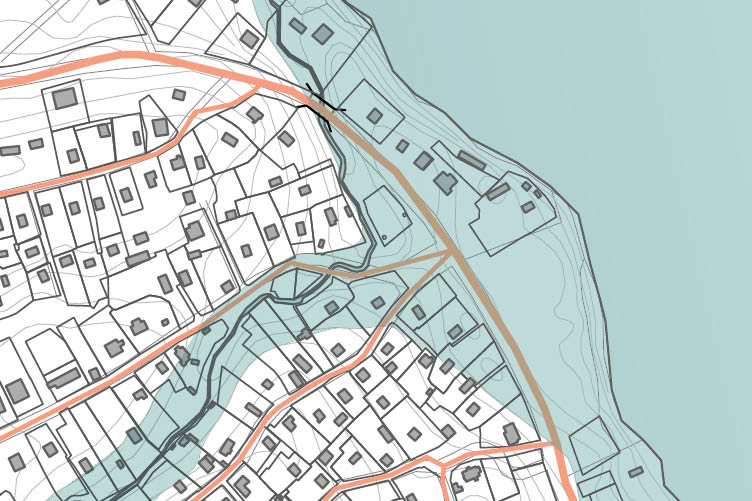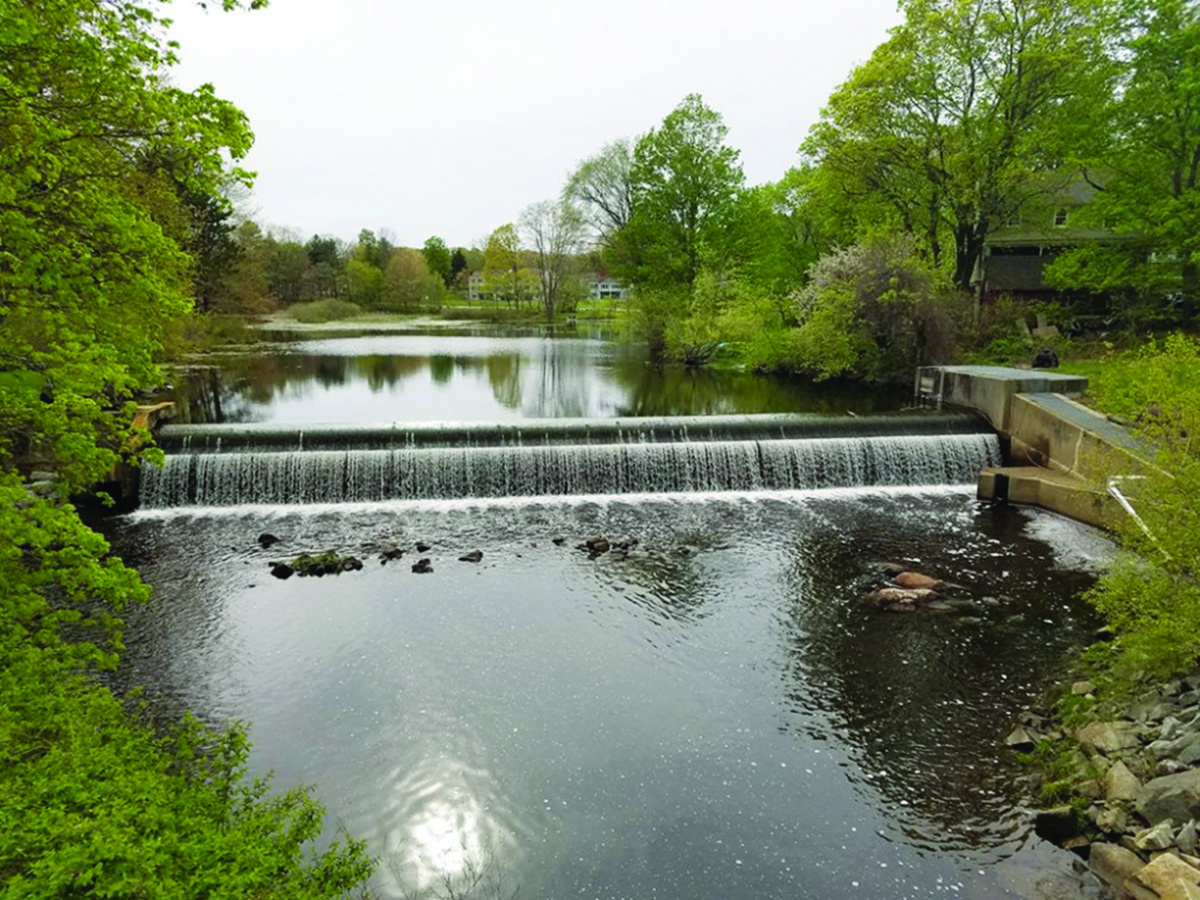
When it comes to tackling the complex environmental challenges New Hampshire communities frequently face, developing productive partnerships with academic researchers is often an iterative process.
Community members and stakeholders provide their perspectives on what’s really happening in their towns and scientists make adjustments to their studies along the way so that the research is as accurate and useful to the community as possible. Collaboration is crucial. Everyone benefits from learning each other’s needs and pressures, and the process helps to build trust.

This shift is abundantly evident in northern New England, where UNH researchers are engaging with local stakeholders to help flood-prone towns become more resilient to rising waters.
“Flooding is by far the most frequent and costly of the natural disasters that we suffer here in New Hampshire,” says Cameron Wake, a research professor of climatology at UNH. “We can’t begin to address resilience to flooding without working with at-risk communities.”
Enter the N.H. Coastal Adaptation Workgroup (NHCAW), a partnership of 24 organizations (including UNH researchers and Extension educators) in the New Hampshire seacoast region whose goal is to help communities adapt to flooding from increased precipitation, sea-level rise and storm surge. Seacoast town planners have relied on NHCAW members and UNH researchers like Wake to help match their information needs with technical assistance and scientific data.
Sherry Godlewski, a resilience and adaptation manager for N.H. Department of Environmental Services and the co-chair for NHCAW, says the role UNH researchers play is critical. “Our municipal decision-makers have a lot on their plates and numerous competing priorities,” she explains. “If we can provide them with much-needed research results, it allows them to make their decisions based on factual information and sound science.”
“Partnerships with institutions and organizations outside of academia are necessary if we want to contribute to solving societal challenges.”
But simply providing study results to a community — even if the community has asked for that specific information — is oftentimes not enough to enact change. Wake cites the example of a handful of communities within the Lamprey River watershed, whose leaders initially failed to embrace 100-year floodplain maps, created with a grant he had secured, that reflected alarming changes in future climate and land-use projections. But after NHCAW members met individually with municipal representatives to connect the research data to each community’s particular risks and needs, the maps gained traction as a resource.
“Those individual talks with leaders in the towns really helped catapult the research results and the maps to a place where they are now being used to help improve town flood resilience,” Wake says. The town of Newmarket, for example, is upgrading a culvert over a creek that empties into the Great Bay Estuary to accommodate salt marsh migration and sea-level rise, and Durham is assessing the impacts of sea-level rise on the town’s groundwater levels.
THE FUTURE OF DAMS

While many communities are making room for rising coastal waters, others — particularly some quaint mill towns built over freshwater rivers — are still holding their water back. By some estimates, there are more than 27,000 dams in New England, many of which are nearing the end of their lifespans. Communities are now wading through some tough conversations about what to do with their aging dam infrastructure. It’s a complicated situation: Although dams can provide hydropower, recreational opportunities and a sense of place for a community, they also can cause a host of ecological problems, such as preventing fish from reaching spawning grounds, and dams in poor condition can pose human safety hazards.
Kevin Gardner, UNH professor of civil and environmental engineering, is leading the aptly named Future of Dams Project. With funding provided by the Established Program to Stimulate Competitive Research (EPSCoR) at the National Science Foundation, the project aims to develop a framework for community decision-making and to help communities examine the tradeoffs associated with dams. There are no easy solutions, but this framework is expected to help all stakeholders’ voices be heard and their perspectives carefully taken into account — particularly, Gardner notes, those of tribal communities and others whose voices have not historically been considered.
The list of project partners spans universities, nonprofit agencies, government agencies, dam owners, nearby businesses, tribal communities and recreational enthusiasts across Maine, New Hampshire and Rhode Island — all of whom contribute diverse perspectives on the issue. “Partnerships with institutions and organizations outside of academia are necessary if we want to contribute to solving societal challenges,” Gardner explains.
As a restoration ecologist with the National Oceanic and Atmospheric Administration’s Restoration Center in Narragansett, R.I., Jim Turek is focused on reestablishing access to upstream habitats for migratory fishes, but he’s well aware of the complexities involved when trying to build community consensus around the fate of aging, defunct dams.
“There are often many challenges, including technical, regulatory, cultural and social and political constraints that need to be taken into account,” Turek says. “It’s difficult to quantify social interests and sentimental values. But open, frank discussions with a variety of project stakeholders and the efforts of partners such as the Future of Dams team can help in brokering solutions to successfully advance projects to implementation.”
For those hard-to-quantify values, Catherine Ashcraft, UNH assistant professor of natural resources and the environment, is helping to lead role-playing negotiation simulations that engage dam stakeholders in a fictionalized decision scenario based on actual data. Someone who owns or operates a dam might negotiate as if they were a homeowner living next to a dam, for example.
“When you play someone else, you are freer to explore a host of options that you might not have otherwise considered,” she says. Research on this technique is just emerging, and Ashcraft is intrigued about its potential to advance community discussions, inform policy and contribute to negotiation research.
There are plenty of reasons to be hopeful about this community-engaged approach to research, but Gardner tempers his enthusiasm with a dose of reality. “There shouldn’t be the impression that this is easy or that it’s all roses,” he says. “Not everything you do is going to be a home run, nor will society just magically change.”
Persistence and a focus on the long game can help with the inevitable setbacks in the process. Wake, the UNH climatologist, is a firm believer that research success cannot always be measured by traditional academic methods.
“I still have to make sure I write those manuscripts and secure new research grants, but I’m working toward something that is much bigger that I hope society will directly benefit from,” Wake explains. “And for me, it’s all framed as a sustainable future, which includes a future that’s resilient to coastal flooding.”
-
Written By:
Rebecca Irelan | Institute for the Study of Earth, Oceans, and Space | rebecca.irelan@unh.edu | 603-862-0990
















































